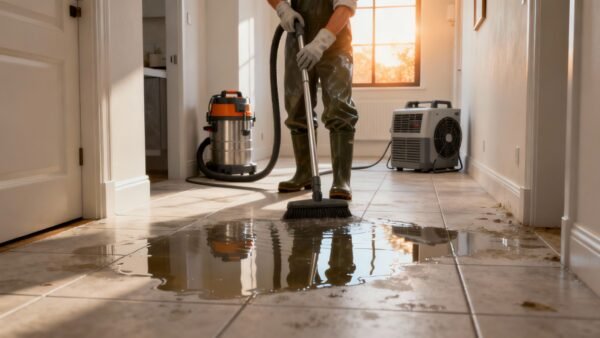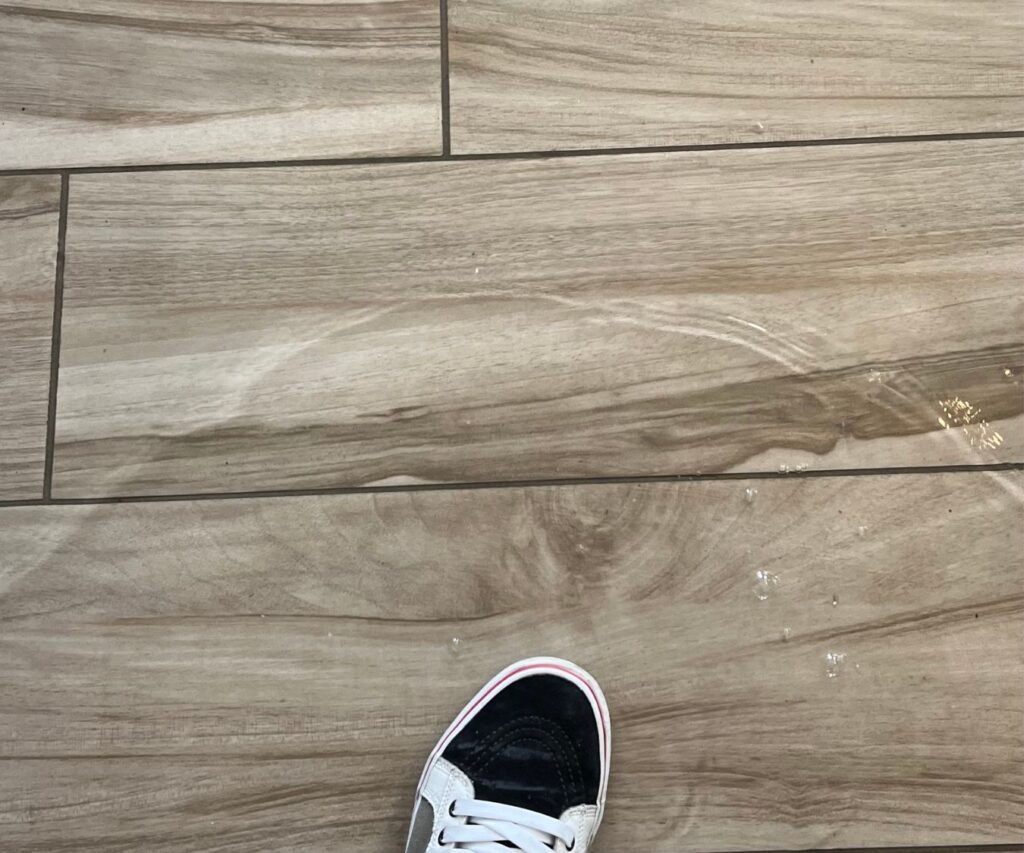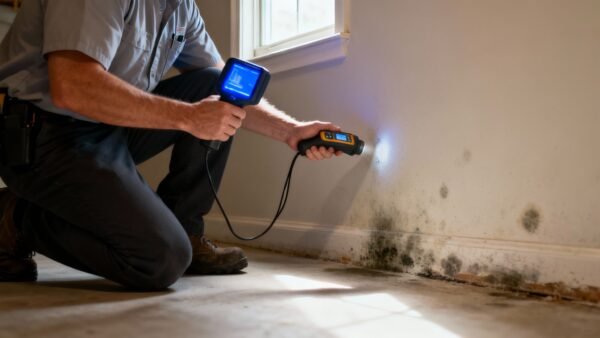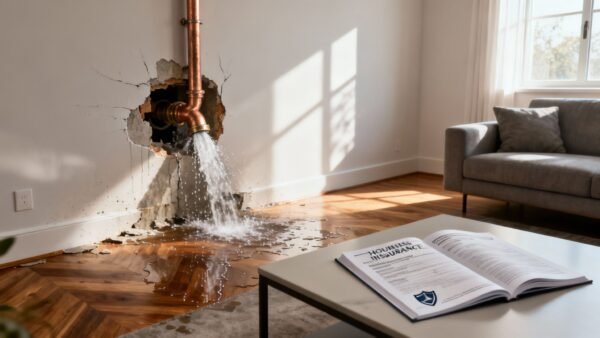
Your Guide to Emergency Water Cleanup at Home
When you find yourself standing in water inside your home, the clock starts ticking. Those first 30 minutes are absolutely critical. What you do right then and there can dramatically
Water damage is one of the most disruptive problems a property manager can face. Unlike fire or storms, it often develops quietly, then spirals into a crisis that threatens tenant safety, disrupts leases, and drains operating budgets. For Los Angeles property managers overseeing apartments, condos, or commercial spaces, emergency water damage prevention is both a financial safeguard and a reputation protector.
This guide provides practical insights on prevention strategies, restoration planning, and technology tools that can help property managers stay ahead of costly water damage incidents.
Water damage rarely announces itself. A failing water heater, blocked drain, or pinhole pipe leak can quietly wreak havoc behind walls and under floors for weeks before anyone notices. By the time the first water stain appears, the damage is often widespread.
20–24% of all homeowners’ insurance claims are water-related (Insurance Information Institute).
85% of commercial buildings in the U.S. have experienced water damage at least once.
Average insurance claim: $7,000–$13,000—not including long-term tenant turnover or structural depreciation.
For property managers, the financial losses extend beyond the repair bill. Water damage can cause:
Lost rent during remediation and displacements
Reputational damage with tenants and buyers
Mold remediation costs, which multiply if moisture is left unchecked
Reduced property value when damage is discovered during inspections or sales
In short, water damage jeopardizes both short-term cash flow and long-term asset value.
Every day a unit sits empty due to water damage is lost revenue. Multifamily buildings, student housing, and high-occupancy rentals are especially vulnerable. In Los Angeles’ competitive housing market, one unresolved incident can also damage your reputation, leading to tenant distrust and higher vacancy rates.
For property managers, emergency water damage prevention is not optional—it’s a business continuity strategy.

Preventive inspections are the frontline defense against hidden water damage. Schedule routine walkthroughs for:
Roofs and gutters (especially after seasonal storms)
Plumbing systems and appliance hookups
Crawl spaces and basements
HVAC systems and condensation lines
Working with licensed restoration professionals ensures that potential issues are caught early before they escalate.
Tenants are your eyes and ears inside the property. Educating them can prevent small issues from becoming disasters. Provide clear instructions on:
How to spot early signs of leaks or mold
What to do in case of an emergency leak
Who to contact (with after-hours phone numbers)
Simple flyers, digital reminders, or onboarding packets can empower tenants to act quickly.
Routine plumbing checks, HVAC servicing, and roof inspections should be built into annual maintenance budgets. Preventive upkeep costs far less than emergency restoration.
Today’s property managers have access to technology that can detect water problems before they spiral out of control.
Placed near sinks, toilets, or water heaters, these devices alert you immediately when a drip is detected.
These monitor flow and pressure patterns in your plumbing. Sudden changes may indicate hidden leaks or burst pipes.
Installed in high-risk areas (crawl spaces, HVAC closets, basements), these sensors pick up on subtle moisture changes before they cause damage.
Advanced inspections with infrared cameras detect temperature variations in walls and ceilings, helping identify hidden moisture.
These valves automatically cut off the water supply when a leak is detected—ideal for vacant properties or properties where access is delayed.
ROI Example: A $200 leak detection setup vs. an $8,000 restoration bill. The investment is obvious.
Even one inch of floodwater can cause over $25,000 in damage. Unlike slow leaks, floods destroy flooring, drywall, and electrical systems in a matter of hours.
While LA isn’t known for hurricanes, urban flash flooding is increasingly common. Factors include:
Aging infrastructure
Rapid storm runoff in hillside areas
Coastal storm surges and climate shifts
Standard property insurance does not cover flooding. Property managers should:
Conduct flood risk assessments for each property
Consider supplemental flood insurance where appropriate
Install sump pumps and drainage systems where feasible
Don’t assume inland or elevated buildings are immune—LA’s infrastructure can turn a sudden downpour into a flood hazard.
Even with prevention, emergencies happen. Knowing how to respond minimizes costs and downtime.
Shut off the water supply immediately
Secure the affected area to prevent tenant entry
Document the scene with photos for insurance claims
DIY solutions are insufficient for multi-unit or large properties. Professional restoration companies:
Arrive within 60 minutes
Deploy water extraction and drying equipment
Use HEPA air scrubbers to prevent mold spores
Follow IICRC drying standards for structural integrity
Work with a restoration company that provides documentation, moisture reports, and claim support to speed up payouts.
Once cleanup is complete, schedule follow-up inspections to confirm moisture is eliminated and install preventive technology for the future.
At Onsite Pro Restoration, we responded to a Los Angeles apartment complex with a burst pipe that flooded six units. Within one hour, our IICRC-certified team arrived on site, extracted standing water, and installed dehumidifiers and air movers.
Containment and drying completed in 48 hours
Mold growth prevented by immediate mitigation
Tenants returned in under a week
Insurance claim processed smoothly with detailed reports
The property manager avoided significant revenue loss and long-term tenant dissatisfaction.
Don’t wait for visible signs. Routine inspections and technology prevent surprises.
Prevention pays. A few hundred dollars in sensors or maintenance can save thousands.
Floods require separate planning. Review coverage and mitigation measures.
Professional partnerships matter. Align with certified, licensed restoration companies before emergencies happen.

When you find yourself standing in water inside your home, the clock starts ticking. Those first 30 minutes are absolutely critical. What you do right then and there can dramatically

That musty smell in your basement you can't quite place, or that dark spot spreading on the ceiling after a long winter in Los Angeles? That’s not just an annoyance—it's

Wondering if homeowners insurance covers burst pipes in California? This guide explains when water damage is covered, what exclusions apply, and how to protect your home from costly repair bills by understanding your policy’s fine print.

Pete Mantizian is the dedicated owner of Onsite Pro Restoration. He is driven by a passion to improve living conditions and prevent health issues caused by improper restoration. With over 10 years in construction and 7 years in restoration, Petros has managed projects for major franchises like Serv-Pro and 911 Restoration. He holds certifications in Applied Structural Drying, Microbial Remediation, and more. Committed to excellence, Petros ensures every project is done right the first time. Outside of work, he cherishes time with his loving wife and two children, balancing his fulfilling career with creating lasting family memories.
Share
As a property manager, fast action is key to protecting tenants and buildings from costly water damage. Call (818) 336-1800, email info@onsitepro.org, or fill out the form below to connect with our restoration specialists. We’ll provide quick response, professional documentation, and reliable restoration tailored for property managers.